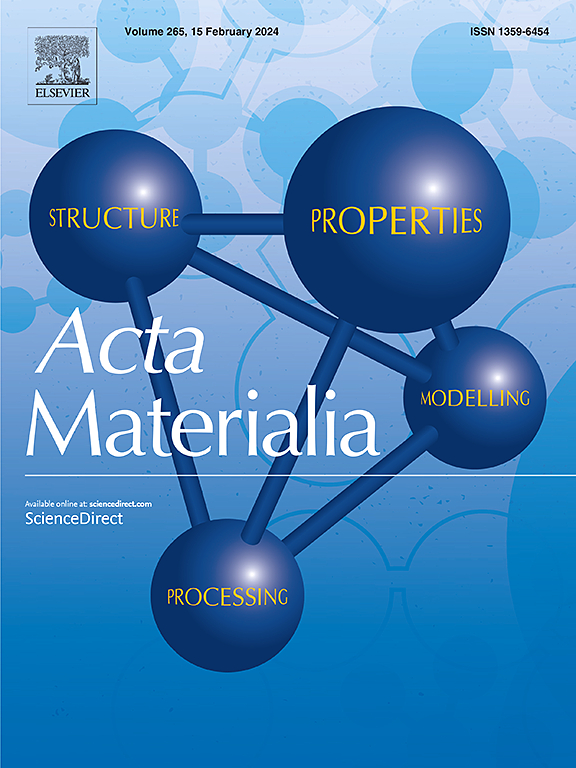Revealing solidification behaviour and phase transformations in Fe60Co25Ni10Mo5 and Fe63Co26Ni11 alloys by using high-speed video and in situ X-ray diffraction"?>
IF 8.3
1区 材料科学
Q1 MATERIALS SCIENCE, MULTIDISCIPLINARY
引用次数: 0
Abstract
A combination of time-resolved synchrotron X-ray diffraction (XRD), high-speed video and electromagnetic levitation (EML) enabled revealing the solidification path and phase transformations in Fe60Co25Ni10Mo5 and Fe63Co26Ni11 alloys during heating and cooling. High-speed XRD provided direct evidence for nucleation of metastable δ-ferrite in undercooled liquid state and its quick transformation to γ-austenite. Addition of Mo clearly favours nucleation of δ-ferrite in Fe60Co25Ni10Mo5 melts undercooled by ΔT of about 100 K and more. In contrast, primary crystallisation of any of δ and γ phases appears to be possible in Fe63Co26Ni11 melts at all levels of undercooling. Neither Ni nor Mo exhibit any notable effect on the growth behaviour of δ and γ phases, which remains close to the one in the Fe60Co40 base alloy. Alloying with Mo has a strong impact on the microstructure and solid state transformations in the Fe60Co25Ni10Mo5 samples such as grain refinement at ΔT < 200 K, incomplete transformation of γ-austenite to α-ferrite, and formation of martensite at ΔT ≥ 330 K.

利用高速视频和原位 X 射线衍射揭示 Fe60Co25Ni10Mo5 和 Fe63Co26Ni11 合金的凝固行为和相变"?
将时间分辨同步加速器 X 射线衍射 (XRD)、高速视频和电磁悬浮 (EML) 结合起来,揭示了 Fe60Co25Ni10Mo5 和 Fe63Co26Ni11 合金在加热和冷却过程中的凝固路径和相变。高速 XRD 提供了直接证据,证明在低温液态下出现了可转移的 δ 铁素体形核,并迅速转变为 γ 奥氏体。钼的加入明显有利于δ-铁素体在ΔT约为 100 K 或更高的低温下在 Fe60Co25Ni10Mo5 熔体中成核。相反,Fe63Co26Ni11 熔体在各种程度的过冷度下,δ相和γ相中的任何一种似乎都有可能发生原生结晶。无论是镍还是钼,都不会对δ和γ相的生长行为产生任何明显的影响,其生长行为仍然接近于 Fe60Co40 基本合金中的生长行为。与钼的合金化对 Fe60Co25Ni10Mo5 样品的微观结构和固态转变有很大影响,例如在 ΔT < 200 K 时晶粒细化,γ-奥氏体向 α-铁素体的转变不完全,以及在 ΔT ≥ 330 K 时形成马氏体。
本文章由计算机程序翻译,如有差异,请以英文原文为准。
求助全文
约1分钟内获得全文
求助全文
来源期刊

Acta Materialia
工程技术-材料科学:综合
CiteScore
16.10
自引率
8.50%
发文量
801
审稿时长
53 days
期刊介绍:
Acta Materialia serves as a platform for publishing full-length, original papers and commissioned overviews that contribute to a profound understanding of the correlation between the processing, structure, and properties of inorganic materials. The journal seeks papers with high impact potential or those that significantly propel the field forward. The scope includes the atomic and molecular arrangements, chemical and electronic structures, and microstructure of materials, focusing on their mechanical or functional behavior across all length scales, including nanostructures.
 求助内容:
求助内容: 应助结果提醒方式:
应助结果提醒方式:


